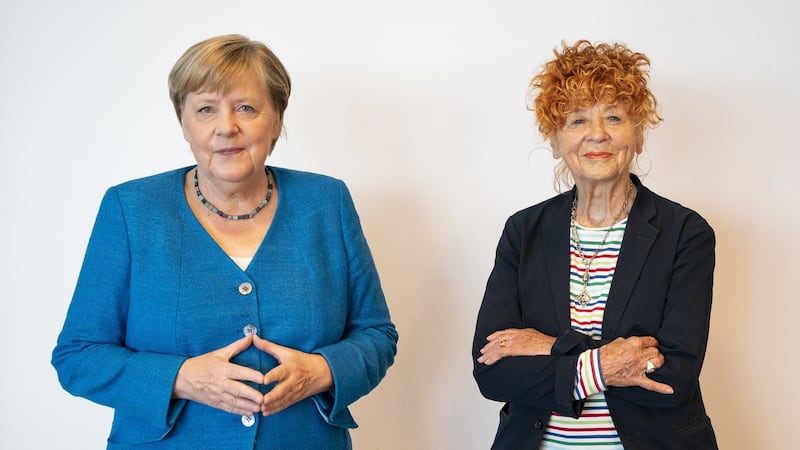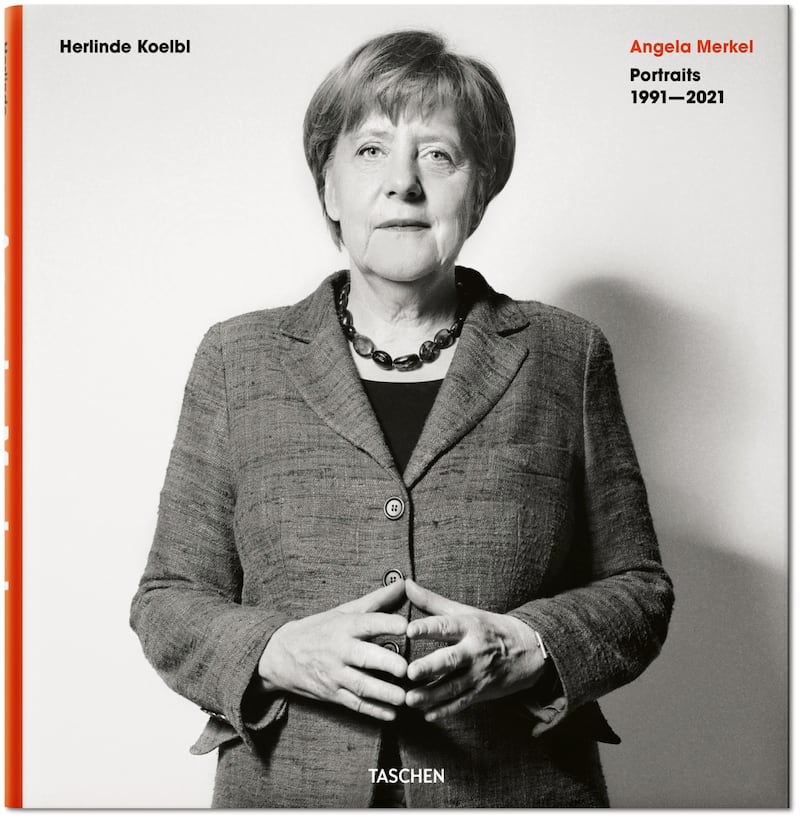Angela Merkel and Herlinde Koelbl both mastered their craft relatively late in life, and in male-dominated professions. Merkel was 36 when she became a minister in Helmut Kohl’s first post-unification cabinet. Koelbl was 37 when she embraced photography, becoming one of the medium’s most renowned German practitioners.
For the last 30 years, with a short hiatus, the two women have met for an annual portrait session. The result, published next week by Taschen, is a landmark study on the visible effects of power on a shy East German physicist who became the world’s most powerful woman.

Soon after Merkel was born in Hamburg in 1954 her Lutheran pastor father, Horst Kasner, decided to move his family across the inner German border. With no pram, baby Angela’s arrival in communist East Germany had a certain Oscar Wilde-like quality.
“When I was eight weeks old I was brought to Brandenburg in a carrier bag,” Merkel told Koelbl in their first interview in 1991.
Months earlier, Merkel had secured a Bundestag seat and was appointed by Helmut Kohl to his first post-unification cabinet.
Where others in Bonn saw a mousy ingenue, Koelbl says her eye was drawn to Merkel’s “strength, energy and individuality”. The remarkable photographs from that session show a young woman looking up at the camera with a striking, wary gaze.

Koelbl included Merkel in a 1990s series of annual portraits of rising politicians, intended to trace the effects of power on politicians. The two women renewed their annual portrait sittings after Merkel became chancellor in 2005.
White wall
Koelbl chose a simple set-up and stuck to it for three decades: a white wall backdrop and no props except a chair. By excluding all trappings of power, the photographer hoped her political subject had nowhere to hide from her or her manual Hasselblad camera. Koelbl’s only instruction: “Look at me with a calm, open gaze”.
Three decades of mutual watchfulness gives the Merkel portrait series a hypnotic quality. Year by year, we see the shifts in Merkel’s body language and gaze: from nervous and wary, through toleration and amusement, to weary opacity.
Despite Merkel’s tight control over her public image and private life, Koelbl says she enjoyed complete autonomy over the project and choice of images.
Friday morning was the first time the outgoing German leader saw the choice of photos alongside their interviews (in German and English).
“Merkel was never as vain as the male politicians, and when you’re not vain, you’re not as easily seduced,” said the German photographer. “She accepted at some point that she had to be photographed as chancellor, but never loved it.”
Those in the chancellor’s inner circle confirm that she “tolerated” the Koelbl portrait appointments each autumn – but she never missed one, either. She even moved forward their final appointment to last August, ensuring the last picture was taken before the official end of her fourth and final term.

Haunting
That last image is haunting: Merkel’s gaze has a resigned, weary quality. Here is someone who has mastered a staggering workload, seen first-hand how the world (doesn’t) work but is still clinging to some humour. What did Koelbl see in her viewfinder that last time?
“The light vanished from the eyes,” she said. “The vitality in the body yielded slowly more toward the static.”
Nearly three decades ago, Merkel confessed to Koelbl that her choice to pursue power meant she was “no longer as I once was”.
With her generous but frank portraits, Koelbl leaves it up to the viewer to decide if the burden of power come at an acceptable price – and whether Angela Merkel chose the right moment to leave.
* Angela Merkel Portraits 1991-2021 by Herlinde Koelbl is published by Taschen










